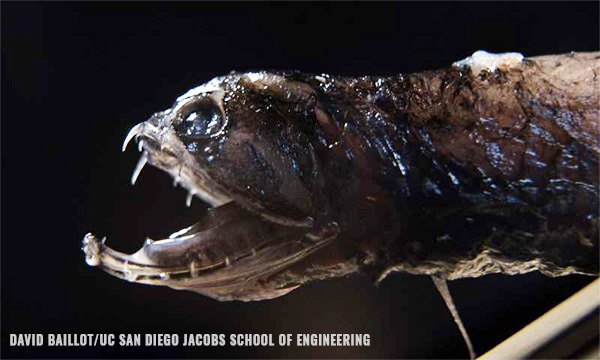Why do deep-sea dragonfish have invisible teeth?
12/28/2019 / By Grace Olson

The deep-see dragonfish is truly a predator meant for the murky depths of the ocean. Aside from its dark skin that allows it to blend in with the ocean’s depths, it has another tool in its arsenal: invisible teeth.
A team of oceanographers and materials scientists from the University of California and the INM-Leibniz Insititute for New Materials in Germany discovered the secret behind the dragonfish’s invisible teeth. They found that the teeth were speckled with nanocrystals, which prevent light from scattering.
“Most deep-sea fauna have unique adaptations, but the fact that dragonfish have transparent teeth puzzled us, since the trait is usually found in larger species,” explained senior study author, Marc Meyers from the University of California. The team published their findings in the journal Matter.
The ocean depths
There are a lot of studies exploring marine life, starting from the smallest phytoplankton to the largest of blue whales. However, the creatures of the great ocean depths remain elusive from the eyes of researchers and the rest of the world. This lack of knowledge is mostly attributed to the inaccessibility of these depths, which are 4,000 m below sea level on average.
The ocean depths have a starkly different environment compared to that near the surface. This includes a lack of light, low temperatures and high pressures. Scientists are particularly interested in how deep-sea inhabitants evolved to adapt to these environments. (Related: Scientists discover life 8,000 feet below the ocean floor.)
Such is the case with the deep-sea dragonfish (Aristostomias scintillans). It is an eerie, eel-like creature with a bulging head and large jaws. These jaws can open up to 120 degrees wide, allowing the dragonfish to consume prey up to 50 percent its size. The dragonfish gives off a faint glow, which remains largely unnoticed in the ocean depths. Most unsettling of all is their pitch-black smiles. A prey would not have noticed the dragonfish’s invisible teeth until it was too late.
The secret behind their pitch-black smiles
Experts and explorers have noted that many deep-sea fish have invisible teeth, but there was not a lot of research on them. This study, to date, is the first to take a closer look at them. The researchers aimed to examine their structure, mechanical properties and ecological function on dragonfish.
The researchers collected specimens from the San Diego trough, which has an average depth of 1,000 m. After collection, they placed the dragonfish under an electron microscope to examine their teeth. Their findings revealed the following:
- The teeth are nanostructured. This means that nanocrystals are speckled along the enamel-like surface of the teeth. These compounds reduce light scattering, rendering them invisible in the ocean depths.
- The teeth are sufficiently thin. This contributes to their invisibility. The lack of surface to bounce light on, coupled with their nanoscale structure, has made it easy for the teeth to blend with the surroundings.
- There is a lack of dentin tubules. The enamel-like layer of the dragonfish’s teeth is similar to those of the piranha’s and the great white shark. However, dentin has a higher degree of mineralization that will make it easily visible. The dragonfish’s teeth evolved by letting go of the dentin and prioritizing transparency instead.
- The teeth are crucial to predator-prey interactions. Without light reflecting off their teeth, dragonfish manage to hide the outline of their jaw and catch unsuspecting prey.
All of these, the researchers concluded, helped make the deep-sea dragonfish better predators in a different world. Their study shed light on the unique characteristics of deep-sea creatures and offered a glimpse into how these particular features may have evolved.
In the future, more and more researchers would surely unlock more discoveries from the ocean depths.
Sources include:
Tagged Under: animal kingdom, animals, biodiversity, breakthrough, camouflage, discoveries, dragonfish, Ecology, environment, invisible teeth, marine life, nanocrystals, ocean life, Oceans, weird science, wildlife
RECENT NEWS & ARTICLES
COPYRIGHT © 2017 ECOLOGY NEWS



















